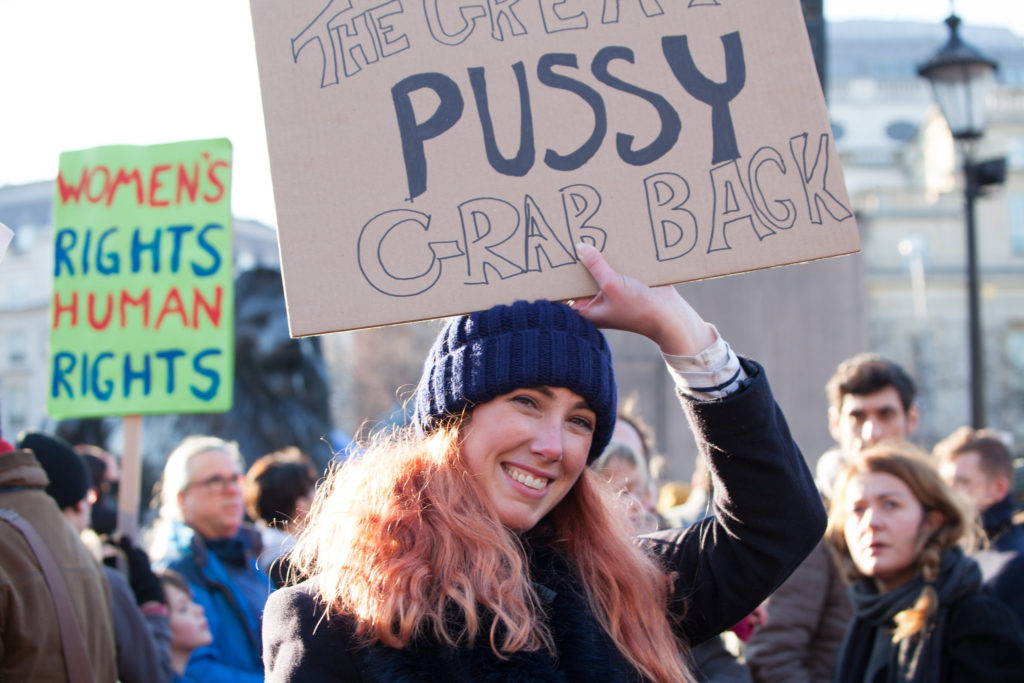A new study published in JAMA Internal Medicine found that about 6.5 percent of women, or an estimated 3.3 million nationwide, said that their first sexual experience was rape. The women’s average ages, at the time, were 15 years old, and the average age of their alleged assailants was 27.
The horrific scale of the crimes is disturbing enough. The age difference adds an even more sinister, predatory element.

The predatory attitude of some adult men toward girls is not limited to rape; more frequently, it’s on display in the form of street harassment by male strangers, often starting around the time girls reach puberty.
Girls know what I’m talking about: Men whistle at them while they walk to their friend’s house, leer at them in stores, masturbate at them from behind newspapers on the subway car, follow them as they walk home from school and even invite them into their cars.
Street harassment is the most common form of sexual harassment and assault that American women experience in their lifetime. Most women say their first incident of sexual harassment took place when they were a teenager or younger, and 71 percent of women nationally have faced street harassment. Women also often report that it is adult men who harassed them, not boys their own age.
I’ve seen this come up over and over again in the nearly 13 years that I have been researching, writing and speaking out about street harassment. Just a few weeks ago, I created an online survey to investigate this further, and I was shocked, but also not shocked, by the results.
Nearly 95 percent of the around 250 people who took the online survey identified as women. Almost 70 percent said they were 13 years old or younger when they first experienced street harassment; 24 percent said they were 14 to 16 years old and only 7 percent were older than 16.
But while most of the women were 13 years or younger when they were harassed, 75 percent said their harasser/s were in their twenties or older and 55 percent were in their thirties or older. Nearly 90 percent of respondents said the boys or men harassing them were older than them.
“I was six years old and on the way to school with a classmate,” one woman wrote. “A middle-aged man on a bike flashed us and made crude gestures.”
“A man in his thirties pulled his car up [next to me] and rolled down the window and asked if he would give me 100 dollars if I would come in his car and have sex with him,” another woman shared. “I was 13.”
The JAMA Internal Medicine study found that women who experienced rape as their first sexual experience were more likely than other women to have a range of health problems—including unwanted first pregnancies, abortions, endometriosis, pelvic inflammatory disease and poor overall health. Similarly, around 80 percent of respondents to my survey said their first experiences with street harassment caused them to feel less safe in the world afterward, and 54 percent said it caused them to change their life in some way.
These numbers are a stark contrast from the experiences of men who rape and harass women and girls. Less than a third of rape incidents overall are reported to police, and then less than one percent of all rapes lead to felony convictions. My research over the years suggests street harassers fare about as well and rarely face any real negative outcomes for their actions.
Sexual violence and street harassment should be unacceptable in a free and democratic society, in part because it prevents equality. Instead, our culture allows adult men to prey on girls, with almost complete impunity—while women’s health, peace of mind, sense of safety and ability to live full lives suffer.
We have the power to do something about this.
We can start by changing the frequent acceptance of men preying on girls—calling out men who sexualize and harass girls and younger women, reporting men who possess child porn and refusing to laugh along with men who make jokes about “underage sex” (or, as it should be known, rape).
We must also engage in prevention measures at a young age and model respect for the children in our lives. We must help boys and young men who are survivors of sexual violence, breaking the cycle of violence in the process. We must support legislation that mandates school curriculum on consent and sex education, as it has shown to be an effective part of prevention as well. We must financially support sexual assault prevention efforts, and so much our lawmakers. The state of California recently allotted $5 million toward those kinds of initiatives, and others should follow suit.
Until we change our culture, we cannot tell girls to go be anything they want to be—because they may not be able to go to school or to a friend’s house without facing male harassment and feeling unsafe. We cannot push for “girl power” until we do something first about the men who try to exert power over girls wherever they go.
Nothing will change until we acknowledge that this happens—that adult men rape girls, harass girls and otherwise make girls feel unsafe in the world.
Girls are not prey. Let’s stop encouraging men to be predators.





